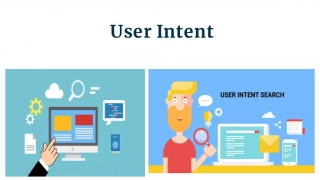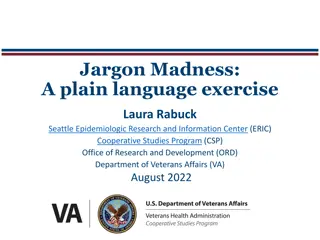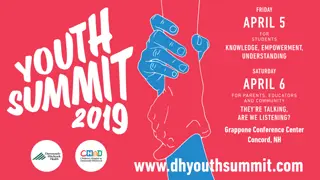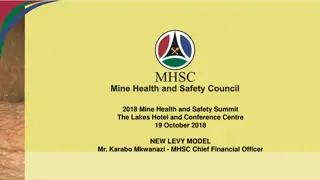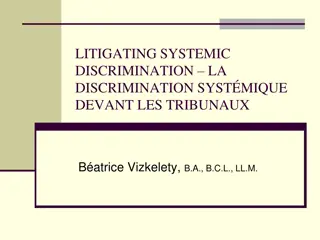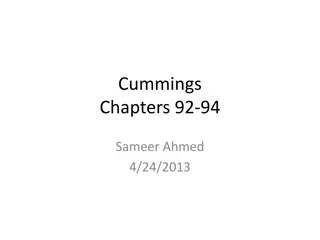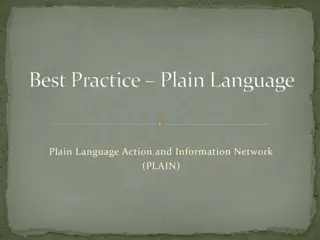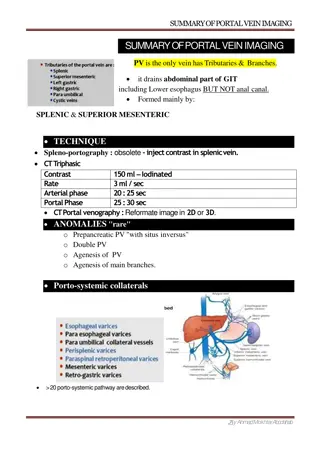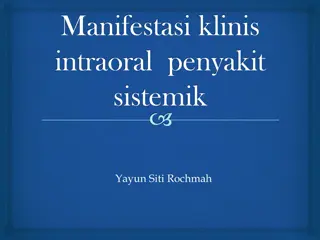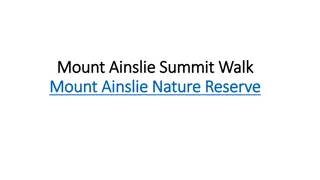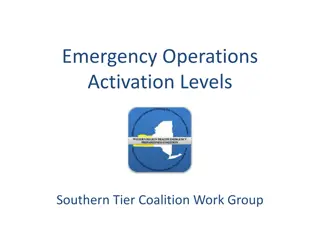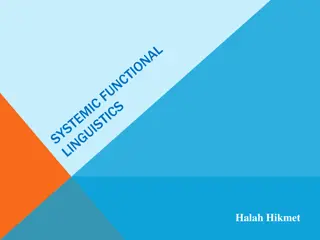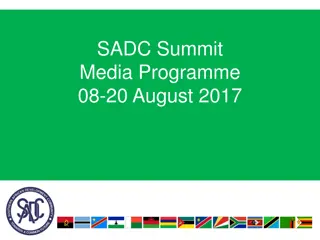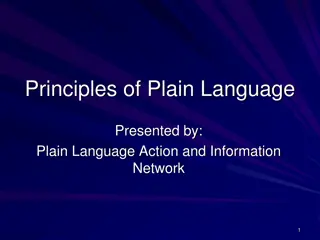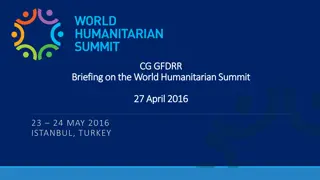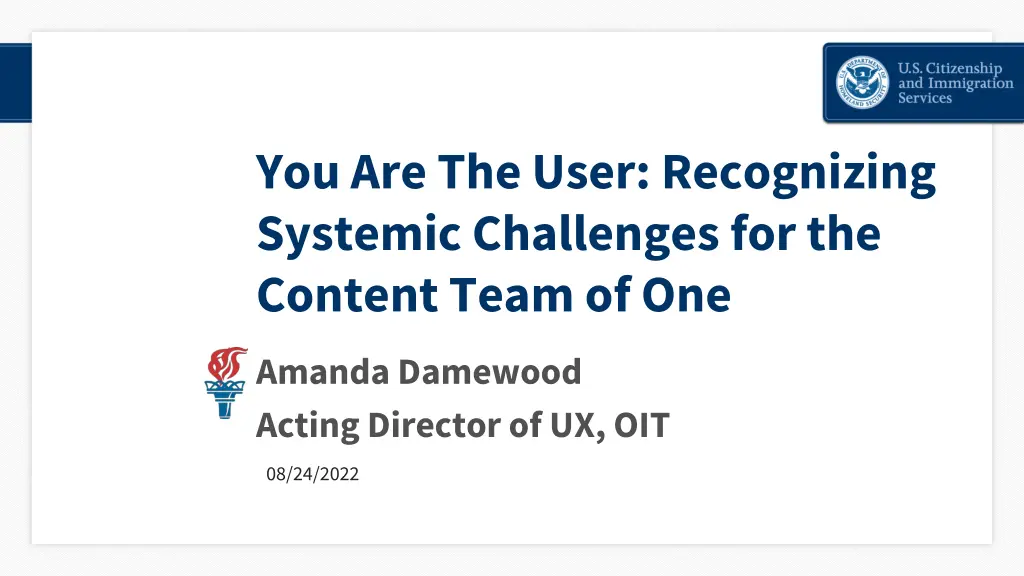
Recognizing Systemic Challenges in Content Team Operations
"Explore the systemic challenges faced by a Content Team of One and strategies to improve communication, learn, and iterate effectively. Addressing issues of working alone, the importance of community, plain language use, and the integration of CX and UX in content creation."
Download Presentation

Please find below an Image/Link to download the presentation.
The content on the website is provided AS IS for your information and personal use only. It may not be sold, licensed, or shared on other websites without obtaining consent from the author. If you encounter any issues during the download, it is possible that the publisher has removed the file from their server.
You are allowed to download the files provided on this website for personal or commercial use, subject to the condition that they are used lawfully. All files are the property of their respective owners.
The content on the website is provided AS IS for your information and personal use only. It may not be sold, licensed, or shared on other websites without obtaining consent from the author.
E N D
Presentation Transcript
You Are The User: Recognizing Systemic Challenges for the Content Team of One Amanda Damewood Acting Director of UX, OIT 08/24/2022
About Me 7+ years in HCD + Co-design Focus on maturing UX practice and bring awareness of service design More time as solo designer than team member 2
Contents The Problem Statement Understand Your Environment The Framework Using Communication to Improve Learn and Iterate Understand Yourself 3
Problem Statement Designer alone: Am I normal? Design is communication hard to not be in community Designers just want to be understood Recognizing that design work is often 2 tracks: The Work Communicating the Value of The Work 4
Where does Plain Language come in? The Plain Language community might think of yourselves as writers or editors, or content strategists Purpose, planning, or intention that exists or is thought to exist behind an action, fact, or material object. You re bringing intention to language! 5
Plain Language and CX + UX Content is integral to customer experience The web is full of content How we talk to our users, our voice, our words, IS the user experience UX is a subset of CX 6
Industrial design (from stamps to staplers) IVR Set up Staffing This is the world of CX Interior Design Architecture Employee training and operationa l guidance Brand and marketing Forms UX (digital products) Regulatory environment Social Media 7
Industrial design (from stamps to staplers) IVR Set up Content shows up in so many places! Employee training and operational guidance Forms Brand and marketing UX (digital products) Regulatory environ-ment Social Media 8
Understand Your Environment 9
Where do you work? How big is the org? Why design now? Who is the executive sponsor for this role? Does this organization have design experience? How do they make decisions? 10
Solo designers: Founder Model Low Maturity Model Team is small Tasked with writing or editing They do it all because they have to Org limits strategic participation Might be working with a design experienced team but few resources or Why do we need a strategy? Plain language is considered at the end, or as part of a compliance process Might be part of a team who hired them because we should Team/leadership doesn t get it 11
Understand Your Orgs Maturity There are many models 12
What is UX Maturity? As teams adopt UX practices, they embark on a journey toward meeting user needs effectively We can use the same overall framework, because we share a goal of user-centeredness 13
Maturity Framework Absent Limited Emergent Structured Integrated User-Driven Teams at the same stage might look different due to organizational specifics such as size, priorities, or politics. 14
What to think about Founder designers: Where do you want to prioritize? What s missing, or what could help the most? UX/UI Designers: Where do you need to prioritize doing design vs something else, like co-design, or educating your teammates/stakeholders about design processes? 15
Lower Maturity Stages: Commonly Team of 1 (1/3) Stage 1 Absent:The user s experience is ignored/strategic content practices nonexistent. Engineers build products based on what s expedient/stakeholder requests. A non-specialist from External Affairs or a SME writes content. 16
Lower Maturity Stages: Commonly Team of 1 (2/3) Stage 2 Limited:UX work is rare, done haphazardly, and lacking importance. Someone may make think about grade level, active voice, or other readability factors, but Plain Language/Content Strategy is not approached holistically. 17
Lower Maturity Stages: Commonly Team of 1 (3/3) Stage 3 Emergent:The content work is functional and promising but done inconsistently and inefficiently. There may be a style guide, but content development is not based on user research/usability of pieces of content is not tested. 18
Higher Maturity Stages Not usually 1 designer (1/3) Stage 4 Structured: The organization has semi-systematic UX-related methodology that is widespread, but with varying degrees of effectiveness and efficiency. There is a style guide and content is considered during earlier stages of product development, but may not be specifically included in usability testing. 19
Higher Maturity Stages Not usually 1 designer (2/3) Stage 5 Integrated: UX work is comprehensive, effective, and pervasive. Content is evaluated by users as part of an overall design; content development is driven in part by user feedback. 20
Higher Maturity Stages Not usually 1 designer (3/3) Stage 6 User-driven: Dedication to UX at all levels leads to deep insights and exceptional user-centered design outcomes. The organization values consistent content across touchpoints, and uses customer/user feedback to drive content development. 21
Teams pass through each stage before getting to the next. 22
Stage 1: Absent Content is elsewhere Teams build functionality (features over strategy) Roadmap focuses on delivery, not problems No discovery or validation of business problems External Affairs manages an editorial calendar and Plain Language compliance is a stick 23
Stage 2: Limited Lone Wolves UI is seen as a part of a larger project, user experience , and the terms are not treated synonymously Successful delivery includes measures of quality: visual consistency, clear language, accessibility Content is valued, but accounted for in later stages of projects Roadmap is still delivery focused 24
Stage 3: Emergent Team or Agency Staffing Multiple UX disciplines recognized and planned for Roadmap accounts for customer needs before product is shipped Content strategists are probably isolated, from each other and plain language functions 25
Reflection: Why are you a team of one? 26
Stage 4: Structured Strategy recognized as a precursor to quality ( how should we measure? ) Roadmap accounts for customer feedback during discover and triages usability test findings Teams understand that a Style Guide is not a replacement for a content expert Plain language is accounted for from the beginning 27
Stage 5: Integrated Product strategy cascades from strategic planning, based on feedback and input from product teams (including user research/feedback) in a cyclical manner Roadmap is customer-driven and outcomes based Content is organized at a programmatic level; a headless CMS or other content management tools may be in play Design systems and governance mature across products 28
Stage 6: User Driven Content projects are driven by customer needs Outcomes-based roadmap aligns with strategic plan User research is present in the broader org, and used to align service strategies, including content UX design system, research repo, and content are aligned across the organization (including brand, CX, etc) 29
Reflection: Where is your next stage? What is reasonable? 30
Tailor Your Communication 31
More mature environments Understand the business environment Learn about product strategy Get data savvy 32
Lower maturity environments Often, the need is to educate about the why and how, NOT to write very well, or create amazing content. Not great design, but great co-design. 33
Bake in teaching and learning Figure out where you can go slow vs where you need to go fast If you want to go fast, go alone. If you want to go far, go with friends Deepen your T Writing/editing, writing for the web/SEO, Ops, strategy, tools and engineering, etc 34
Reflect Do a weekly retro with yourself What worked and what didn t? Listen during rituals What is your team excited about? Confused about? Not thinking about? Not embedded on a cross-functional team? Learn about how teams are using your content. 37
Balance Teach: help the team learn how plain language and appropriate content makes all their work better Let go: as teammates learn about content and PL, the work will multiply! Are there things you can farm out? Can folks start with the style guide after some training? Can working with technical teams get you user feedback? 38
Plan Monitor where you are in the maturity model Address one gap at a time Create a roadmap What are your goals for this practice? What will help you get there, both PL/content-wise, and team-wise 39
Share It can be easy to work in a vacuum don t Pursue the work before it gets thrown over the wall Involve teammates you need the help! Not just content tasks, but building context together 40
Grow What do you need help with? Use your reflection, balance and plan steps to make the case to hire other specialists when it s the right time 41
Hows it feeling? Have you ever thought about the kind of content work you like? Editing content versus writing versus managing systems Are you feeling burnt out or anxious? Maybe you re on the wrong stage of work 43
The Starter The Starter This is someone who comes in to lay a solid design foundation. They can be an end-to-end designer or someone focused on Plain Language or content generation. Comfortable with chaos Can feel their way through Don t mind setting up systems and establishing processes If you re uncomfortable with a lot of ambiguity or don t like defining processes for yourself, you re probably not a Starter 44
The Builder The Builder This is the person who transitions the work into something that is repeatable. More than just setting up processes, they might also establish the systems that lead to scaling work. Balances iteration with commitment to what works Can bring a sense of craft to the iterative early work Good at picking out order (what s working) from chaos If you thrive with ambiguity, or having a well-defined set of tools and processes, you re probably not a Builder 45
The Maintainer The Maintainer is the person who, after the visionary groundwork has been laid and the business model has proven to do what it s supposed to do, simply doesn t mess things up. Content processes defined Content Ops (and/or Research Ops) in place It s a well-oiled machine Don t feel like it s working? Maybe you re not a maintainer. 46
Are you aligned? Plain Language roles are almost certainly maintainers (rooted in regs, not CX) Founder Designers are often Starters or Builders taking over from contractors Are you pushing the team to do something they re not ready for? Or something they can t see the need for? Psychological safety 47
Keep in Touch amanda.f.damewood@uscis.dhs.gov 48

